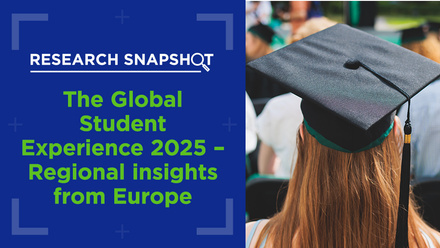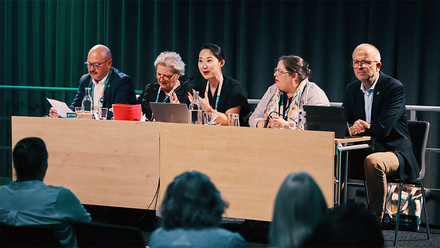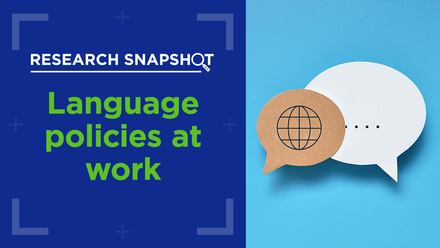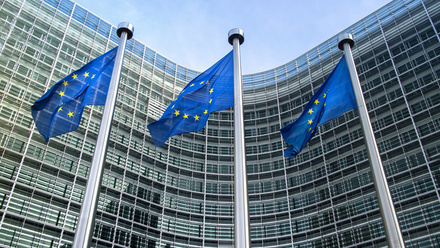Learning from the pandemic past to shape a new future

In the lead-up to the 2022 EAIE Conference and Exhibition in Barcelona, the EAIE blog will feature a series of thought-provoking essays geared towards starting the conversation around the big topics we’ll be discussing this year under the umbrella of the conference theme ‘The future in full colour’. The first Conference Conversation Starter essay asks us to reflect critically on lessons learned during the pandemic – and whether the changes we made in response were truly as transformative as we might think.
September 2019 saw the last in-person EAIE Conference in Helsinki. Little did we know then that the world as we knew it would change so significantly in the subsequent years. Fast forward to September 2022 and it is now possible for EAIE members to meet again in person in Barcelona. This provides a great opportunity for us to reflect on the pandemic and consider how we best build on some of the positives that have emerged from a very unsettling period of time, as we look toward a future in full(er) colour.
New ways of learning: culture shift or quick fix?
If ever we needed an example of how interconnected our world is, the rapid spread of COVID-19 gave us exactly that. As we now emerge from the pandemic, it is quite breath-taking to look back at the speed at which we introduced new ways of working.
We achieved overnight what felt like a decade of progress by being forced to change
In early 2020, Aston University in the UK was implementing a digital strategy and developing a new education strategy which focused on blended learning. Without a pandemic, these strategies would have taken years to implement. Instead, we achieved overnight what felt like a decade of progress by being forced to change. We accelerated investments in the digital infrastructure, including a huge investment in digital hardship support to ensure that all students were able to access online learning. The rapid escalation of tools to support effective digital teaching delivery and online meetings saw all of us learning how to use chat functions, gauge audience feedback through online polls and manage virtual break-out rooms. Out of the necessity for us to work differently emerged more sophisticated use of technology and the creation of digital communities of learners and workers, as illustrated in this briefing by Universities UK in May 2022.
This story of rapid change is one that is common to many universities, but now that the immediate rush is over, we should all stop and ask ourselves if we have really changed. In the rush to respond to shifting circumstances, did we make the deep cultural changes that might have occurred through a deliberate and fully-considered change of strategy, or have we simply made superficial changes for the purpose of dealing with the pandemic? Is the new blended approach to learning that we have created one that is sustainable and delivers great student experiences? Have we learnt the ‘easy’ parts of what technology offers, ignoring more sophisticated and useful functionality that might take more time and effort to learn?
Achieving a decade of progress overnight is, in many ways, a huge step forward for education. However, we need to be prepared to challenge ourselves to make sure that the huge step forward has, in its totality, taken us in the best direction for our learners and our partners across the world.
The wonders (and challenges) of engaging the world from one room
Working during the pandemic saw meetings with international partners moved online and we were able to engage in discussion positively and productively through platforms such as Zoom and Microsoft Teams. The disappointment of not meeting with people in person was balanced out by more people being able to participate in meetings than otherwise would have been the case, and this greater participation has created greater shared ownership and commitment. However, it has required genuine effort to provide opportunities for all participants to engage and to feel confident in turning on microphones and cameras in order to avoid inadvertently silencing voices.
To continue with our student recruitment, we at Aston rapidly moved to digital ways of engaging with prospective students. Our first ‘Aston Live’ conference saw students from across the world engaging in academic taster sessions and chatting with both academic and professional staff. It was exciting: none of us had run a conference like this before, and prospective students found it new and intriguing. Aston, like many other UK institutions, saw a significant increase in the number of new international students during this time, and indeed also managed to deliver both physical and virtual student internships. Our alumni engagement took on a new dimension as alumni were invited to join virtual ‘public lectures’ or ‘world cafés’ and alumni also helped to provide in-country support for outbound or returning international students.
It has required genuine effort to provide opportunities for all participants to engage and feel confident turning on microphones and cameras
When we tried to replicate the ‘Aston Live’ experience some six months later, we heard murmurings of ‘digital fatigue’ and people being overwhelmed with online events. We had to adapt again, which became more difficult as there were fewer new ways of doing things. It would be a mistake to think that we have learnt enough about new ways of working from the pandemic; rather, our experience showed us that we can never stop innovating.
Taking stock
In my role as the Deputy Vice-Chancellor at Aston University, I have responsibility for all student-facing services, including student well-being and mental health, and all of our external activities covering international, business and alumni engagement. As I reflect on my own experience of the pandemic from that perspective, what have I learnt, and what does this mean going forward? A few key themes come to mind.
I learnt: Despite being isolated in my own home, I was more closely connected with colleagues, prospective students, alumni and partners across the world than pre-pandemic.
Going forward: We need to understand why many of us felt more connected. Was it because of the frequency of connection and just how easy it was to meet via Zoom across borders and time zones? Was it because of the time taken to speak one-on-one with many more people? By understanding why we were more connected, we can build stronger connections going forward.
I learnt: Virtual connections do not necessarily create friendships easily. Many students who connected online with peers in their learning journey really missed the opportunity to make friends. Our student union moved societies online, but virtual engagement in social activities was much harder to create than engagement in academic learning.
Going forward: Humans thrive on contact, and whilst virtual connections are great, they are not a total substitute for face-to-face meetings. We must not ignore the benefits of meeting people in person, especially when we don’t know anyone to start with.
I learnt: Our university community has immense resilience in addressing challenges, using creativity, innovation and a genuine collective approach.
Going forward: We must not stop being innovative just because the immediate pressure is less. Imagine how far forward we could move if the ability to innovate as we did through the pandemic became a regular way of working.
I learnt: The importance of caring: colleagues looked after one another and went the extra mile in looking after the mental health and well-being of students.
Going forward: The pandemic gave many of us that extra impetus to care about others out of a concern for those who were struggling. As we move to a new normal, we must continue to care and be compassionate.
The full spectrum of international leadership
Many universities have leadership positions that are focused on ‘things international’. To enable the ‘full colour’ perspective to thrive in our institutions, perhaps we should focus on more systematically using the international lens to weave together the full range of activities that universities undertake. This would require a renewed emphasis on thinking innovatively, laterally and holistically, as well as strengthened analytical skills to spot connections and emerging trends. We cannot predict the future, but we can articulate a vision for our institutions and our sector that builds meaningfully on the extraordinary road we have just travelled.
Questions for discussion
- How can we best mainstream ‘virtual connectedness’ so that it becomes a powerful mechanism to strengthen links with partners, alumni, employers and prospective students?
- What works well in the way that our students are now learning, and what could we do better?
- While the more ‘transactional’ part of partnerships might be managed online, how can we best build and sustain the friendships and close relationships that underpin successful partnerships in our new blended world?
- How do we integrate the innovation, agility and creativity exhibited during the pandemic into ‘business as usual’? What role do global partnerships and collaborations play in continuously building our resilience and ability to innovate?
- How do we maintain the aspect of caring about one another and also showing kindness? Could future internship and mobility activities be pitched to not just support individual students in their learning, but to enable acts of kindness and support? How do we prioritise time to practice kindness?






